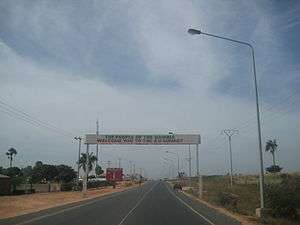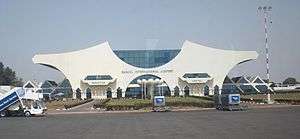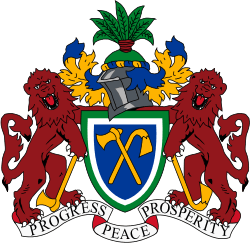Transport in the Gambia

The system of transportation in the Gambia mixes both public and private operations and consists of a system of roads (both paved and unpaved), water and air transportation. There are no railways in the country.
Roads
Highways:
As of 2002, there were 2,700 km of roads, including 956 km of paved roads. There were 106,600 passenger cars and 142,300 commercial vehicles were in use. The most important highway in the Gambia is the Trans-Gambia Highway.
total: 3,742 km
(country comparison to the world: 159)
paved: 723 km
unpaved: 3,019 km (2004)
Newly paved roads are usually in excellent condition.
Waterways

The Gambia River not only provides important internal transport but is also an international commercial link. Oceangoing vessels can travel 240 km upstream. In 2004 there were 390 km of total waterways. Banjul, the principal port, receives about 300 ships annually. Ferries operate across the river and between Banjul and Barra.
With the construction of major all-weather roads on both sides of the Gambia River, the waterway has become less significant for passenger traffic.
Waterways: 390 km (small ocean-going vessels can reach 190 km) (2008)
country comparison to the world: 90
Ports and harbours: Banjul, Gambia Ports Authority
Merchant marine:
total:'5
country comparison to the world: 133
by type: passenger/cargo: 4, petroleum tanker 1 (2008)
Airports

The country's only international airport is at Yundum, 26 km from Banjul. Air Gambia, 60% state owned, acts as an agent only. Foreign air carriers provide international service.
Airports: 1 (2008): Banjul International Airport Yundum.
country comparison to the world: 133
Airports - with paved runways:
total: 1
over 3,047 m: 1 (2008)
